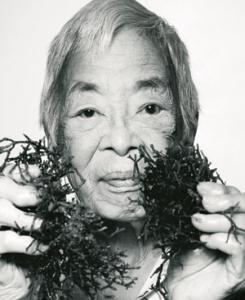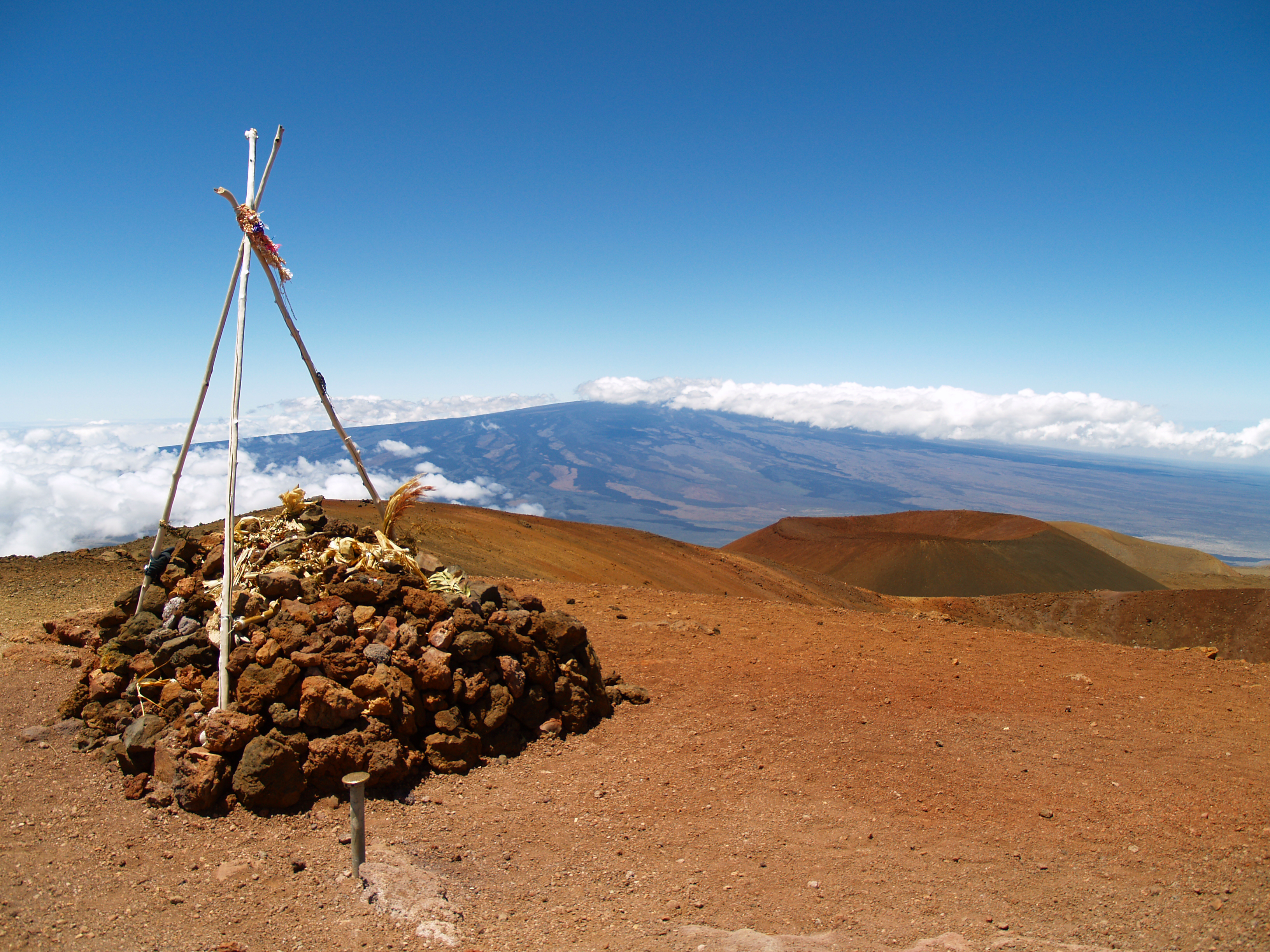
Why research current Native Hawaiian gathering practices?
Isn't it in the past?
A few weeks a go, due to the restrictive timeline of scholarship applications, I was in need of an acceptance letter to the Ph.D. program of my current Botany department at the University of Hawaii at Manoa. The letter was necessary to secure my application for the next school year funding (mahalo e Ke Ali'i Pauahi Na Hookama Post High Scholar Program). I contacted the department chair of Botany, he forwarded the proper paper work and I wrote my petition as to why the continuation of my education and research of the relationships Native Hawaiians share with the contemporary environment in Hawaii was necessary within the department.
Our faculty meets weekly every Tuesday at noon to discuss departmental business so I submitted my letter and CV the previous Sunday and just hoped for the best. That Tuesday I went to work and checked my phone frequently (esp. after 12:00pm) for a response from the chair of the department or my advisor for acceptance into the program.
Instead I received a letter of nomination by the department faculty for the Achievement Rewards for College Scientists (ARCS) - Honolulu Chapter Awards. I was confused because the requirement of the nominee is a Ph.D. candidate, which I was not (or not confirmed at least). So I was puzzled, puzzled for a few hours until my advisor sent an email (later around 9:00pm) congratulating me on acceptance into the UH Manoa Botany Ph.D. program and nomination of the ARCS award which for 2011 the botany nominee is in honor of Isabella Aiona Abbott (picture below), the limu lady. Dr. Abbott conducted research relevant to traditional, Hawaiian Ethnobotany, discovered 200 new species of seaweed, shared traditional uses of seaweeds and provided a safe haven for local and Hawaiian students within the department for at least 20 years.

Dr.Abbott in her October 21, 2010 UH Malamalama cover story, "Pioneering professor is first lady of limu". She passed on October 28, 2010 at the age of 91.
Working in the community one of my mentors noted that awards were good but they were just brief recognitions of work that would take much longer than that moment to accomplish and see through. A very humble person not really letting his many awards shine over the work he continues to do, he puts family first. Dr. Abbott did the same thing her work was her life's work and it never finished, she still has a couple publications in manuscript.
As a requirement for the nomination students from all College of Natural Science departments ( 1) microbiology, 2) mathematics, 3) information science, 4) physics, 5) chemistry 6) botany and other science, engineering and math focused areas are to gather and present an overview of their research interest with a 10min oral presentation and poster (3'x4'). Cramming 4 years of work into 10 minutes is a stretch but a good exercise in identifying or re-identifying important aspects of research focus and track.
UHM Botany M.S. research presented for ARCS 2011 @ POST127
Coming back to my mentor, I wondered why I was being nominated considering there are other projects in the department that Dr. Abbott has helped nurture. But simply put she told me that "this year the ARCS for Botany is in honor of Dr.Abbott and we thought she would have been happy to you see you receive it." It was almost too simple of a concept but to be given a recognition award in honor of Dr. Abbott (the first Hawaiian female Ph.D.) makes my hopes of finishing the doctoral program that much brighter.
So this morning we all met for presentations, and I don't think anyone really knew what to expect (especially me). But everyone had a timed 10 minute talk with questions and stood by their posters after all oral presentations were completed. Half of the presentations I didn't know what they were talking about but I enjoyed the enthusiasm all these different majors had in their research, kind of made me feel like how I feel about my research.
There were heavy presentations such as working on a bamboo extract to cure breast cancer, splitting electrons in a 24 kilometer diameter tube having 40 billions collisions per second, outer galaxy explorations that utilizes the "sacred" mountain of Mauna Kea to get past the dust particles and other crazy esoteric (things that only a few people can understand) research, but the passion of the researchers is what kept me awake and interested in their presentations.


Offering area used by Native Hawaiians. Telescopes used by everyone else in the world.
The interesting part about studying the relationships between people and their environment is the cross section of individuals in the ARCS presentation room and the types of environments that we choose to put our selves in for extended periods of time. Such as spending extreme amounts of time in the basement of a building splitting chemical bonds, or in State Archives sifting through 200 year old documents or hiking in National Parks to see the effects of photosynthetic pathways of grasses in conjunction with elevation gradients.
All of our interests drives our actions, methods of approach and research.
So when it came my turn to present research I have been conducting with feedback from the Hawaiian community, I wasn't even going to try and convince the audience about the importance of plants to society because I just didn't think it was my "normal" crowd. So I did an oli from the area I conducted extended observations in, shared some pictures of current events supported by wild gathering practices and the results of my research so far (in which I was wrong in all of my hypotheses, and that's okay).
I only had one question (which in the science world is kind of a "kiss of death" because either you weren't clear in your explanation of the project or they aren't interested in your research) and it was in regards to some families on Hawai 'i Island preferring to gather 'Ohi'a (Metrosideros polymorpha) for firewood. The question was "wouldn't that hurt the ecosystem?" (this question I think was in response to a question I had asked the previous presenter in regards to the clear cutting of invasive bamboo forests in China to make extracts to cure cancer. I asked if there would be any ecological impacts of clear cutting and he said "absolutely no impact")


'Ohi'a seedlings on O'ahu and a 'ohi'a tree with flowers on Hawai'i Island.
My response was that the 'ohi'a trees that are being utilized for firewood to support traditional Hawaiian practices such as imu and other cooking methods, are being deforested for the incoming urban sprawl outside of Hilo and not necessarily for firewood. Families are not cutting down these 'ohi'a themselves but friends and family members will share firewood with each other if they are aware it is a practice families do often, such as imu, and are clearing lots.
Families, who rely on these resources, sustainably harvest firewood by only collecting dead pieces, this means they can use the piece right a way instead of waiting for the wood to cure and dry out. People buying acres to build houses are clear cutting 'ohi'a forests, and reducing overall abundance of dryland forests, to make way for landscapes they grew up with such as grass lawns and other familiar plants (these are known as transported landscapes and most people do this, especially when moving to an area they are unfamiliar with).
My father was raised in Kalapana on Hawaii Island (1955-65), just past where deforesting is currently taking place. When I asked him what was used for firewood he said 'ohi'a, confirming other Hawai'i Island families preference as not recent but historic. In addition in the 1856 edition of Ka Hae Hawai'i a Hawaiian language newspaper 'ohi'a was being sold in Honolulu, O'ahu for $14 a pile.
Currently there are 12 types of firewood available and on Hawai'i Island, with 16% being native species preferred for firewood if available. On O'ahu there are at least 17 different types of firewoods being utilized, with no use or preference for native species. On both islands Kiawe (Prosopis padilla), also known as mesquite, is highly prized (93% of surveyors preferred) as a firewood for its availability, wood density and taste it imparts on food. Kiawe is another species that is being cleared in undeveloped areas and utilized as firewood. Community members would like access to this clearcut wood, (Kiawe or 'Ohi'a) especially if development is going to take place anyways, they would like to utilize it for cultural purposes specifically imu or smoking meats, as opposed to mulching it or letting it rot.



I suggest current status of Hawai'i Island is what O'ahu was roughly 150 years ago, utilizing the native trees from soon to be house sites. We need to look forward in planting resources, native or introduced, to be sustainable and perpetuate common cultural and community building practices such as imu and simple things like fire building and recharging the aquifer.
I will be presenting my Master's Defense in Botany during the first week of May at the University of Hawaii at Manoa in St.John building. If you are interested in learning more about my research within historical or current Native Hawaiian gathering practices, especially with imu, please contact me (kkamelam@hawaii.edu).
Mahalo to the Native Hawaiian community for allowing me to do the research that I do, to my 'ohana, the University of Hawaii at Manoa Botany department, the University of Hawaii at Manoa Ethnobotany track, my advisor Dr. Tamara Ticktin and the ARCS foundation for the support and exposure to research I probably wouldn't have access to.


